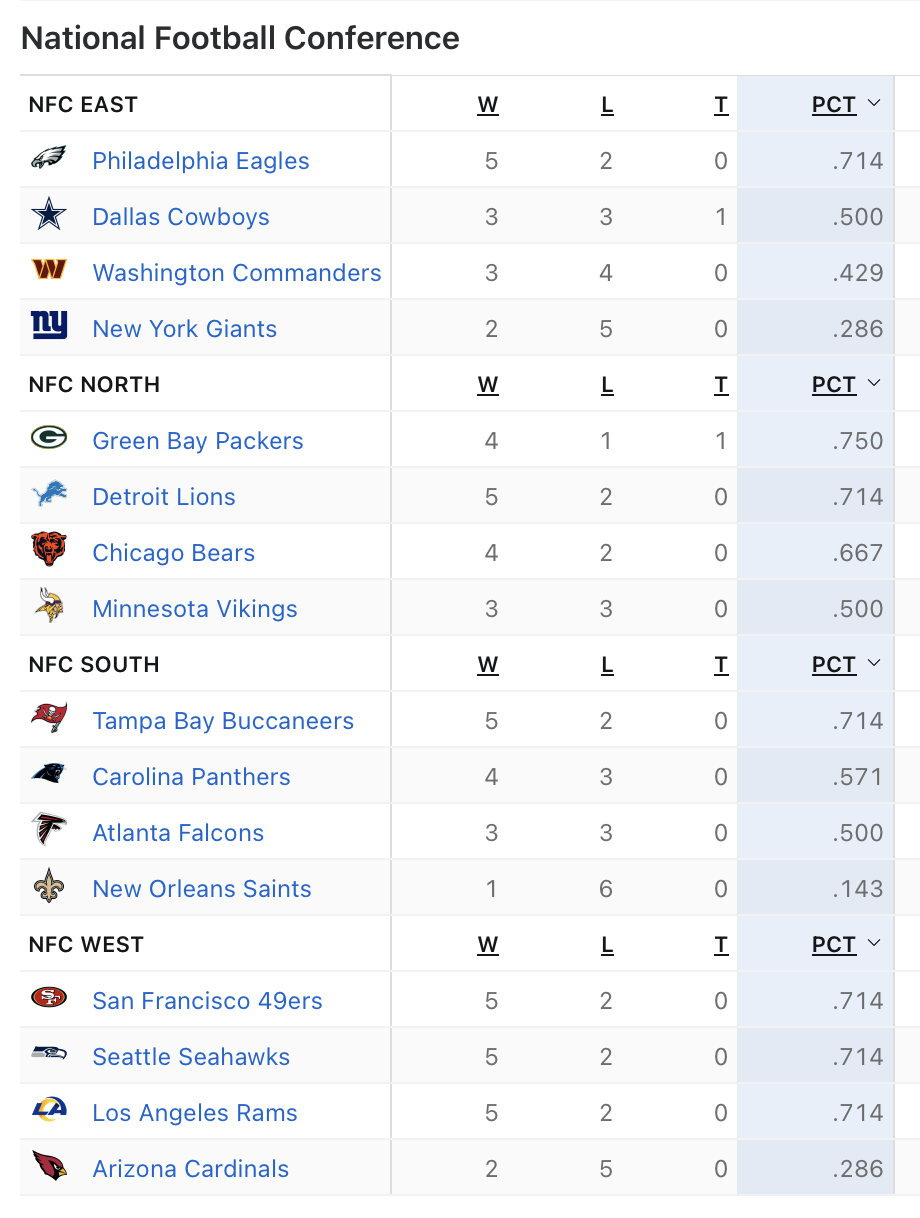Ties and percentages
October 22, 2025 at 11:25 AM by Dr. Drang
I was looking at the NFC standings yesterday, particularly the NFC North, the Chicago Bears’ division. The hated Packers are at the top of the division with a 4-1-1 record and a winning percentage of .750.

(Screenshot taken this morning from ESPN.)
How does a 4-1-1 record turn into .750? I guess the obvious answer is that the tie is treated as half a win and
But for some reason, my initial thought was more complicated. I thought of it as the weighted average of the winning percentage of non-ties with the winning percentage of ties:
(There may be a philosophical argument as to whether a tie truly constitutes a .500 winning percentage, but I’m just going to accept it as a given.)
The calculation works out the same, of course, because
I think this says something about me and my tendency to overcomplicate things. On the other hand, it’s always nice to be able to work out a solution in more than one way.
If you find that referring to numbers like .750, .800, and .500 as “percentages” a tiny bit off-putting, you’re my kind of people. But it’s common in sports to divide one number by another and call it a percentage—a tribute to the elasticity of language.
Two other common features of sports percentages:
- They are always (?) written to three decimal places. I think this was arrived at through experience—enough digits to distinguish close races but not enough to waste space.
- They are always spoken as if the decimal point isn’t there. The examples above are “seven-fifty,” “eight hundred,” and “five hundred.”
Baseball also uses “average” to express one number divided by another: batting average and earned run average come to mind. But it also has the slugging percentage, which isn’t remotely like a percentage.
I’m a big fan of “modulus,” mainly because of its many uses in engineering mechanics, e.g., Young’s modulus, bulk modulus, and section modulus. But I don’t expect to see it on ESPN anytime soon.
